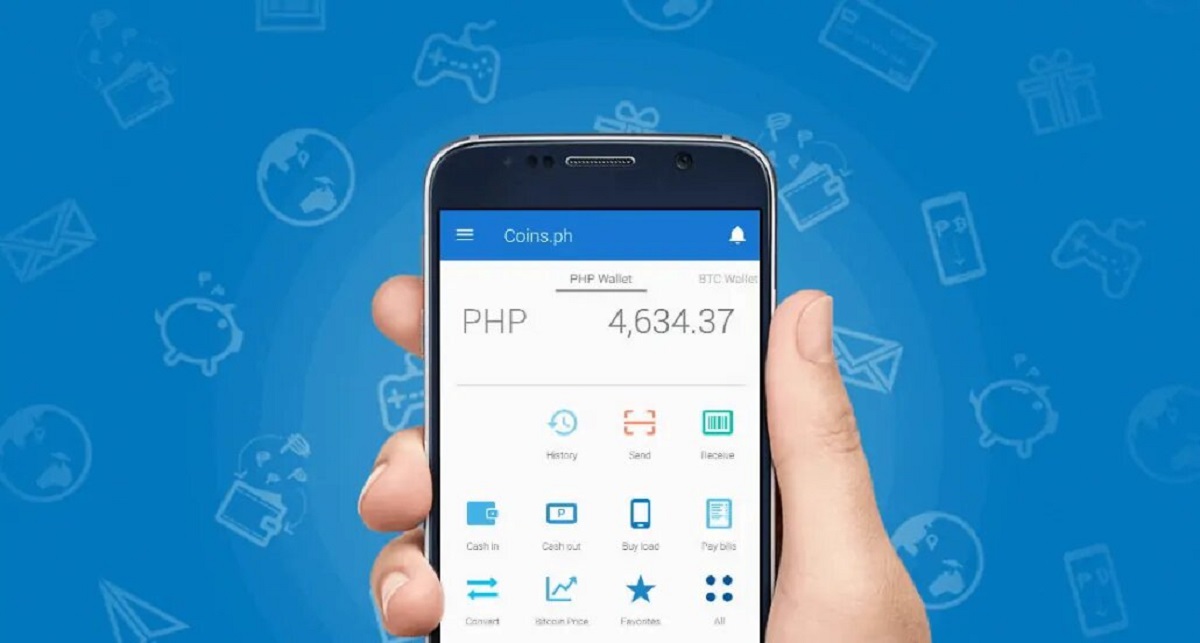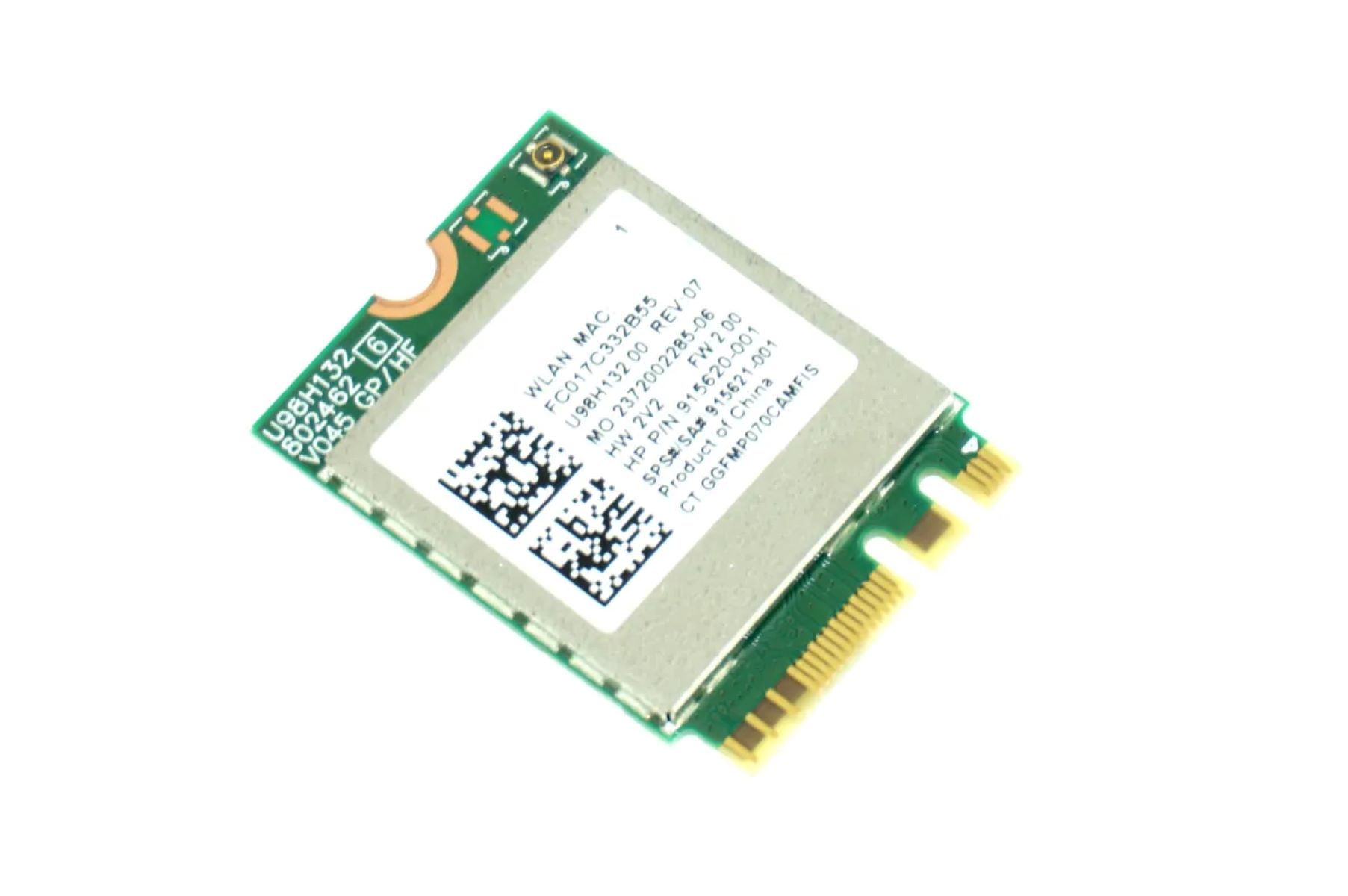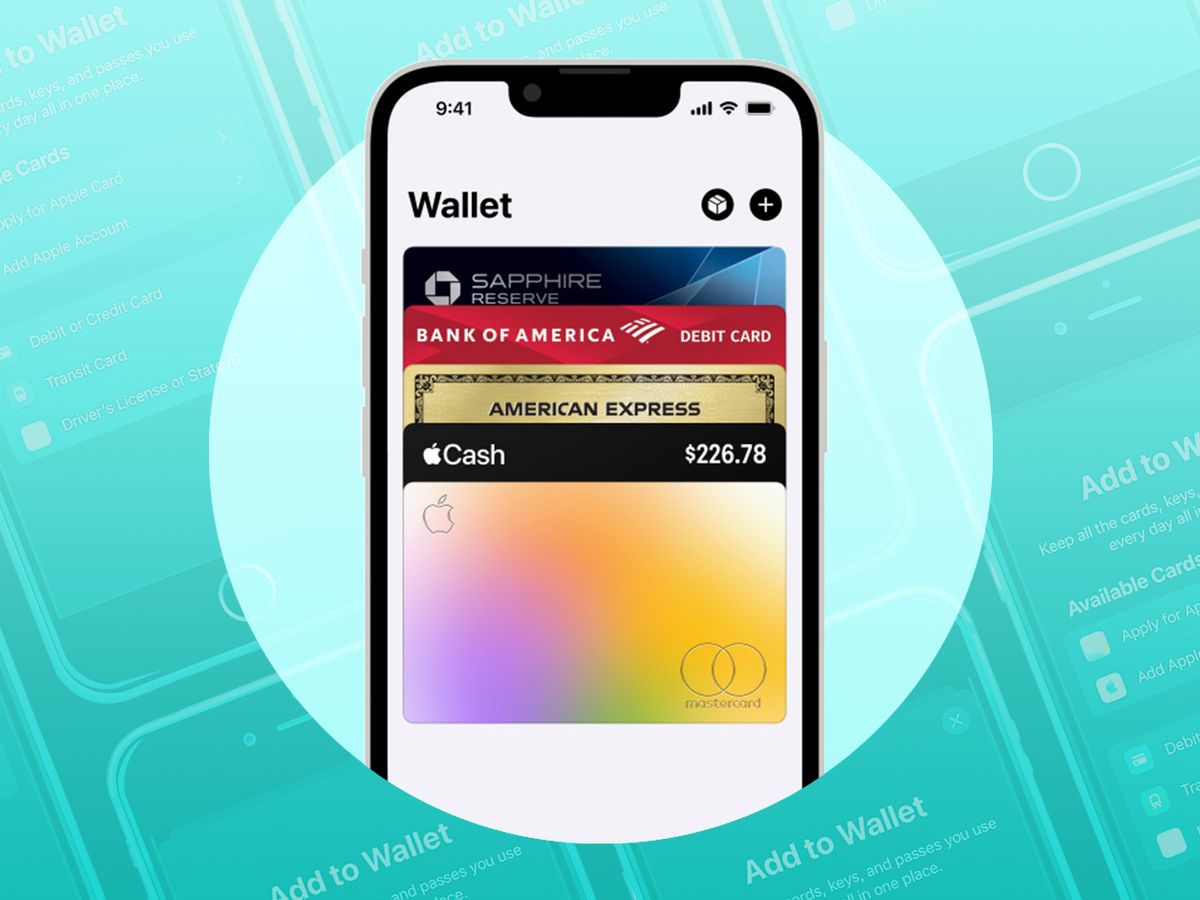Introduction
Welcome to the world of electronic wallets, where the convenience of digital transactions has revolutionized the way we handle our finances. In today’s fast-paced world, traditional payment methods, such as cash or checks, are being replaced with digital alternatives that offer greater security, speed, and accessibility.
An electronic wallet, commonly known as an e-wallet, is a digital platform that allows users to store their payment information in a secure and encrypted format. With the rise of e-commerce and online transactions, having an e-wallet has become essential for individuals who want to make quick and hassle-free payments from their PCs.
In this article, we will explore the process of adding a card to an e-wallet specifically for PC users. Whether you are new to e-wallets or just want to expand your payment options, this step-by-step guide will walk you through the process of adding a card to your e-wallet, ensuring that you can easily and securely make payments from your PC.
But why should you consider using an e-wallet for PC in the first place? Let’s delve into the benefits it offers and discover why it’s worth your attention.
What is an e-wallet?
An e-wallet, short for electronic wallet, is a digital tool that allows users to securely store payment information and make transactions electronically. It functions as a virtual wallet, replacing the need for physical cash or cards for online and offline purchases. With an e-wallet, users can manage their funds, make payments, and transfer money conveniently and quickly, all from the comfort of their PC.
E-wallets come in various forms, including mobile apps, web-based platforms, and software applications designed for PCs. They provide a secure solution for storing multiple payment methods, such as credit cards, debit cards, and even digital currencies like Bitcoin. By keeping the user’s payment information encrypted and protected, e-wallets offer a safe and convenient way to make transactions without the need to share sensitive data with each merchant separately.
The key advantage of an e-wallet is its versatility. It can be used for a wide range of transactions, including online shopping, bill payments, ticket bookings, money transfers, and more. E-wallets also often come with additional features and functionalities, such as loyalty card integration, digital coupon management, and budgeting tools, making them a comprehensive all-in-one solution for managing personal finances.
Furthermore, e-wallets offer enhanced security compared to traditional payment methods. Instead of exposing your card details to merchants during each transaction, an e-wallet employs various security measures like encryption and tokenization to protect your sensitive information. This reduces the risk of your data being compromised or misused, giving you peace of mind when making online payments.
In addition to convenience and security, e-wallets also enable users to keep track of their spending more effectively. Most e-wallets provide transaction history and detailed reports, allowing users to monitor their expenses, set budgets, and gain insights into their financial habits. This is particularly useful for individuals who want to manage their finances efficiently and make informed decisions about their spending.
Now that we have an understanding of what e-wallets are and the benefits they offer, let’s dive into the process of adding a card to an e-wallet for PC users.
Benefits of using e-wallets for PC
Using e-wallets for PC offers numerous advantages over traditional payment methods. Here are some key benefits that make e-wallets a preferred choice for many users:
- Convenience: One of the major advantages of using an e-wallet for PC is the convenience it provides. With just a few clicks, you can make payments from your computer without the need to enter your payment details repeatedly. This saves you time and eliminates the hassle of manually entering card details for each transaction.
- Accessibility: E-wallets can be accessed from any PC with an internet connection, making them highly accessible. Whether you’re at home, in the office, or on the go, you can easily manage your payments and make transactions without the need for physical cards or cash.
- Security: E-wallets prioritize the security of your payment information. By storing your card details in an encrypted and protected format, they minimize the risk of fraud or unauthorized use. Additionally, e-wallets often offer additional security features such as two-factor authentication, biometric verification, and transaction alerts.
- Speed: Making payments with an e-wallet is incredibly fast. Once your card details are stored, you can complete transactions with just a few clicks. This saves you time and streamlines the checkout process, especially when making repetitive purchases.
- Rewards and Discounts: Many e-wallet providers offer rewards programs and discounts for using their services. By linking your e-wallet to loyalty programs, you can earn points or access exclusive offers and discounts with participating merchants. This can help you save money and maximize the value of your purchases.
- Transaction History and Reports: E-wallets typically provide detailed transaction history and reports, enabling you to track your spending and budget more effectively. This feature allows you to gain insights into your financial habits, manage your expenses, and make informed decisions about your finances.
These benefits make e-wallets for PC a convenient and secure payment option, providing users with a seamless and efficient way to manage their financial transactions. Now, let’s proceed with the step-by-step guide on how to add a card to your e-wallet for PC users.
Step-by-step guide to adding a card to an e-wallet for PC
Adding a card to your e-wallet for PC is a straightforward process that can be completed in just a few simple steps. Follow this step-by-step guide to seamlessly add a card to your e-wallet and start enjoying the convenience of digital payments:
- Step 1: Download and install the e-wallet app: If you don’t already have an e-wallet app installed on your PC, visit the official website or app store of your chosen e-wallet provider. Download and install the app onto your PC.
- Step 2: Sign up or log in to your e-wallet account: Open the e-wallet app and either sign up for a new account or log in to your existing account if you already have one. Follow the instructions on the screen to complete the process.
- Step 3: Locate the option to add a card: Once you’re logged in to your e-wallet account, navigate to the settings or account section of the app. Look for an option that allows you to add a card or payment method to your e-wallet. This could be labeled as “Add Card,” “Manage Payment Methods,” or something similar.
- Step 4: Enter your card details: Click on the “Add Card” or similar option and enter the required card information. This typically includes the card number, expiration date, CVV code, and cardholder name. Double-check the entered information to ensure its accuracy.
- Step 5: Verify the card: Depending on the e-wallet provider, you may need to verify the card to ensure its ownership. This is usually done through a small transaction on your card, where you’ll need to verify the transaction amount or enter a verification code provided by your bank.
- Step 6: Set up a PIN or password for security: After your card is verified, you’ll have the option to set up an additional layer of security by creating a PIN or password. This ensures that only authorized users can access and use the card for transactions.
- Step 7: Confirm the addition of the card: Once you’ve completed the previous steps, review the card details and click on the “Confirm” or “Done” button to finalize the addition of the card to your e-wallet for PC.
Congratulations! You have successfully added a card to your e-wallet for PC. You can now enjoy the convenience of making digital payments directly from your computer, without the need to enter your card details for each transaction.
Step 1: Download and install the e-wallet app
The first step in adding a card to your e-wallet for PC is to download and install the e-wallet app onto your computer. Here’s how you can do it:
- Visit the official website: Start by visiting the official website of the e-wallet provider you have chosen. Look for a download link or a section dedicated to the PC version of the app.
- Click on the download link: Once you have found the appropriate section, click on the download link that corresponds to your operating system (Windows, macOS, Linux, etc.).
- Wait for the download to complete: After clicking the download link, the app will begin downloading onto your computer. The time it takes to complete will depend on your internet connection speed.
- Open the installation file: Once the download is finished, locate the installation file in your computer’s downloads folder or designated location. Double-click on the file to launch the installation process.
- Follow the installation instructions: The installation process will vary depending on the e-wallet app you have downloaded. Simply follow the on-screen instructions to install the app onto your PC.
- Complete the installation: Once the installation is complete, you may be prompted to restart your computer. If so, go ahead and restart to ensure the app functions properly.
- Launch the e-wallet app: After the installation and any necessary restarts, locate the e-wallet app on your computer and open it. If there is a desktop shortcut created during the installation, you can click on it to launch the app.
Congratulations! You have successfully downloaded and installed the e-wallet app on your PC. You are now one step closer to adding your card and enjoying the convenience and security of digital payments. In the next step, we will guide you through the process of signing up or logging in to your e-wallet account.
Step 2: Sign up or log in to your e-wallet account
To proceed with adding a card to your e-wallet for PC, you need to either sign up for a new account or log in to your existing e-wallet account. Here’s how you can do it:
- If you’re a new user:
- Open the e-wallet app: Launch the e-wallet app that you downloaded and installed. Look for an option that says “Sign up” or “Create an Account.”
- Provide your personal information: Fill out the necessary information, such as your name, email address, and a secure password. Make sure to choose a strong password that includes a combination of letters, numbers, and symbols.
- Verify your email: Some e-wallet providers may require you to verify your email address before proceeding. Check your inbox for a verification email and follow the instructions provided to verify your account.
- Agree to the terms and conditions: Read through the terms and conditions of using the e-wallet service and click on the checkbox to indicate that you agree to them.
- Create your account: Once you have filled in all the necessary details and agreed to the terms, click on the “Create Account” or similar button to complete the sign-up process.
- If you already have an account:
- Open the e-wallet app: Launch the e-wallet app on your PC.
- Look for the “Log In” option: Navigate to the login screen of the app. Typically, there is a button or link that says “Log In” or “Sign In.”
- Enter your credentials: Input your registered email address or username and your password in the provided input fields. Double-check the information to ensure accuracy.
- Click on “Log In”: Once you have entered your credentials, click on the “Log In” or “Sign In” button to access your e-wallet account.
Great! You have successfully signed up for a new e-wallet account or logged in to your existing account. In the next step, we will guide you through locating the option to add a card to your e-wallet for PC.
Step 3: Locate the option to add a card
After signing up or logging in to your e-wallet account, the next step is to locate the option that allows you to add a card to your e-wallet for PC. Depending on the e-wallet app you are using, the location and labeling of this option may vary. Here’s how you can find it:
- Explore the main menu: Look for a menu button or icon within the e-wallet app. This is usually located in the top-left or top-right corner of the screen. Click on it to expand the menu and reveal additional options.
- Check the settings or account section: Within the main menu, you may find a section labeled “Settings,” “Account,” or “Manage.” Click on this section to access the settings and account management options.
- Browse through the options: Once you are in the settings or account section, carefully examine the available options. Look for labels such as “Payment Methods,” “Add Card,” or something similar that indicates the ability to manage your payment information.
- Search for relevant icons or buttons: Pay attention to icons or buttons that signify adding a card, such as a “+” symbol or an icon of a credit card. These visual cues can help you identify the option more easily.
- Utilize the search function (if available): If you’re having trouble locating the option, some e-wallet apps have a search function within their settings or account section. You can enter keywords like “add card” or “payment methods” to quickly find the relevant option.
Keep in mind that the user interface and navigation may differ based on the e-wallet app you are using. If you’re still unable to locate the option to add a card, consult the app’s help or support documentation for more specific guidance.
Once you have successfully found the option to add a card, you’re ready to proceed to the next step, where you will enter your card details into your e-wallet for PC.
Step 4: Enter your card details
Now that you have located the option to add a card in your e-wallet for PC, it’s time to enter your card details. Follow these steps to input your card information securely:
- Click on the “Add Card” or similar option: Within the settings or payment methods section of your e-wallet, locate and select the “Add Card” option. This will prompt you to enter your card details.
- Enter your card number: Start by entering the 16-digit card number into the designated field. Make sure to input the correct digits without any spaces or dashes.
- Provide the card’s expiration date: Enter the expiration date of your card. This typically consists of a month (MM) and a two-digit year (YY).
- Input the CVV code: Locate the three-digit CVV code on the back of your card and enter it into the appropriate field. This code provides an additional layer of security for your card.
- Enter the cardholder’s name: Input the full name of the cardholder as it appears on the front of the card. Make sure to type the name accurately to avoid any issues.
It’s crucial to double-check the information you have entered to ensure its accuracy. Any errors in the card details can lead to issues when making transactions or verifying your card later on.
Additionally, you may encounter additional fields or options depending on the e-wallet app and the card you are adding. These could include the card’s billing address, card type selection (credit or debit), and other relevant details. Fill in these fields as required to complete the card entry process.
Once you have entered all the necessary card details, proceed to the next step to verify the card and ensure its ownership within your e-wallet for PC.
Step 5: Verify the card
After entering your card details into your e-wallet for PC, the next step is to verify the card to ensure its ownership and security. Verification processes may vary depending on the e-wallet provider, but here are some common methods of card verification:
- Small transaction verification: This method involves your e-wallet provider making a small charge to your card (usually less than $1) and asking you to verify the amount of that transaction. You may receive an email or notification with instructions on how to verify the transaction, such as entering the exact amount charged or a verification code provided by your bank.
- Verification code: In some cases, your bank may send you a verification code via SMS or email. You’ll need to enter this code into your e-wallet app to verify your card.
- Automatic verification: Certain e-wallet providers have agreements with card issuers, allowing for automatic verification of the card. This means that the verification process may be completed without any additional steps required from the user.
The verification process serves to confirm that you are the rightful owner of the card and ensures the security of your e-wallet account. It is important to follow the instructions provided by your e-wallet provider to successfully complete the verification process.
Remember to check your email inbox or your e-wallet app notifications for any messages related to card verification. Act promptly to complete the verification, as some e-wallet providers may have a time limit for verification before the card may need to be re-entered.
Once your card is successfully verified, you can proceed to the next step, where you will set up a PIN or password for added security in your e-wallet for PC.
Step 6: Set up a PIN or password for security
In order to enhance the security of your e-wallet for PC, it is recommended to set up a Personal Identification Number (PIN) or password. This step ensures that only authorized individuals can access and use your e-wallet for transactions. Here’s how you can set up a PIN or password for added security:
- Open the e-wallet app: Launch the e-wallet app on your PC and navigate to the settings or security section.
- Locate the PIN or password settings: Look for an option that allows you to set up a PIN or password. The labeling or placement of this option may vary depending on the e-wallet app.
- Select your preferred security method: Choose between setting up a PIN or password based on your preference and the options available within your e-wallet app.
- Set up your PIN or password: Follow the on-screen instructions to set up a PIN or password. Ensure that your PIN or password is unique, strong, and known only to you.
- Confirm your PIN or password: For security purposes, you may need to re-enter your chosen PIN or password to confirm it. This ensures that you have entered it correctly.
- Save and secure your PIN or password: Once you have set up your PIN or password, make sure to save it in a secure place or use a password manager to store it. Avoid sharing it with anyone to maintain the confidentiality of your e-wallet account.
Setting up a PIN or password adds an extra layer of protection to your e-wallet for PC and helps prevent unauthorized access to your account. It is important to use a unique and strong PIN or password that is not easily guessable and to regularly update it for maximum security.
With your PIN or password set up, you’ve taken an important step in securing your e-wallet for PC. In the next step, we will guide you through confirming the addition of your card to your e-wallet.
Step 7: Confirm the addition of the card
After entering your card details, verifying the card, and setting up a PIN or password for added security, the final step is to confirm the addition of the card to your e-wallet for PC. This step ensures that your card is successfully linked to your e-wallet account. Here’s how to complete this process:
- Review your card details: Before confirming, take a moment to review the card details you have entered. Verify the accuracy of the card number, expiration date, CVV code, and cardholder name.
- Click on the “Confirm” or “Done” button: Locate the “Confirm” or “Done” button within your e-wallet app. This button is typically found at the bottom of the screen or in a prominent position.
- Wait for the confirmation message: After clicking the “Confirm” or “Done” button, your e-wallet will process the card addition request. Wait for a confirmation message or notification to indicate that your card has been successfully added.
- Verify the card addition: In some cases, your e-wallet provider may require additional verification to ensure the security of your account. This could include sending a notification to your phone or email, requesting you to confirm the card addition by clicking on a link or entering a code.
- Check your e-wallet account: Once you have received the confirmation message and completed any additional verification steps, check your e-wallet account to ensure that the card is displayed within your list of payment methods.
Congratulations! You have successfully confirmed the addition of your card to your e-wallet for PC. You can now enjoy the convenience of making digital payments directly from your computer using the added card.
Remember to keep your e-wallet app and device secure by regularly updating your app, using strong PINs or passwords, and being cautious about sharing your login credentials. This will help safeguard your e-wallet account and protect your financial information.
With the card successfully added, you are now ready to explore the features and benefits of using your e-wallet for PC. Happy digital transactions!
Tips for a seamless card addition process
Adding a card to your e-wallet for PC can be a smooth and hassle-free process with these helpful tips. Follow these suggestions to ensure a seamless card addition experience:
- Double-check your card details: Before entering your card details into your e-wallet app, take the time to double-check and verify the accuracy of the card number, expiration date, CVV code, and cardholder name. Any errors in these details can lead to issues with transactions later on.
- Choose a strong PIN or password: When setting up a PIN or password for your e-wallet, select a combination that is strong, unique, and not easily guessable. Avoid using common patterns or personal information that can be easily associated with you.
- Keep your card and personal information secure: Protect your e-wallet account and card information by keeping your PC and e-wallet app updated with the latest security patches. Also, refrain from sharing your login credentials or card details with anyone to prevent unauthorized access.
- Enable two-factor authentication: If your e-wallet app supports two-factor authentication, enable this additional layer of security. It typically involves receiving a verification code through SMS or email when signing in or making transactions.
- Regularly monitor your transactions: Keep an eye on your e-wallet transaction history to quickly detect any suspicious or unauthorized activity. If you notice any unfamiliar transactions, report them to your e-wallet provider immediately.
- Stay up-to-date with e-wallet provider updates: Stay informed about any updates or notifications from your e-wallet provider. These updates may include new features, security enhancements, or important information regarding your e-wallet account.
- Read the terms and conditions: Take the time to read and understand the terms and conditions of using your e-wallet for PC. Familiarize yourself with the responsibilities, liabilities, and rights outlined in the agreement.
- Contact customer support when needed: If you encounter any issues or have questions during the card addition process, don’t hesitate to reach out to your e-wallet provider’s customer support. They can assist you with troubleshooting or provide guidance to ensure a smooth experience.
By following these tips, you can ensure a seamless card addition process and make the most of your e-wallet for PC. As you continue to use your e-wallet, always prioritize the security of your personal and financial information to protect yourself from potential risks.
Now that you’re equipped with these valuable tips, you’re ready to confidently add your card to your e-wallet for PC and enjoy the convenience of digital payments.
Conclusion
Congratulations on successfully adding a card to your e-wallet for PC! You have taken a significant step towards simplifying your payment processes and enjoying the convenience of digital transactions. E-wallets offer numerous benefits, including convenience, accessibility, security, speed, and the ability to track your spending effectively.
Throughout this guide, you learned the step-by-step process of adding a card to your e-wallet for PC. Starting from downloading and installing the e-wallet app, signing up or logging in to your account, locating the option to add a card, entering your card details, verifying the card, setting up a PIN or password, and finally confirming the addition of the card – each step is crucial to ensure a seamless card addition experience.
Remember to follow best practices when using your e-wallet, such as double-checking your card details, enabling two-factor authentication, and regularly monitoring your transactions. By implementing these tips and maintaining the security of your e-wallet account, you can enjoy safe and convenient digital payments.
Now that you have successfully added a card to your e-wallet for PC, take some time to explore the various features and functionalities offered by your e-wallet app. Familiarize yourself with its capabilities and take advantage of any additional services provided, such as loyalty programs or budgeting tools.
Should you encounter any difficulties or have further questions, don’t hesitate to reach out to your e-wallet provider’s customer support for assistance. They are there to provide guidance and support, ensuring a smooth experience.
We hope this guide has been helpful in adding your card to your e-wallet for PC. Embrace the convenience and security that e-wallets offer and enjoy seamless digital transactions from the comfort of your computer. Happy digital payments!

























